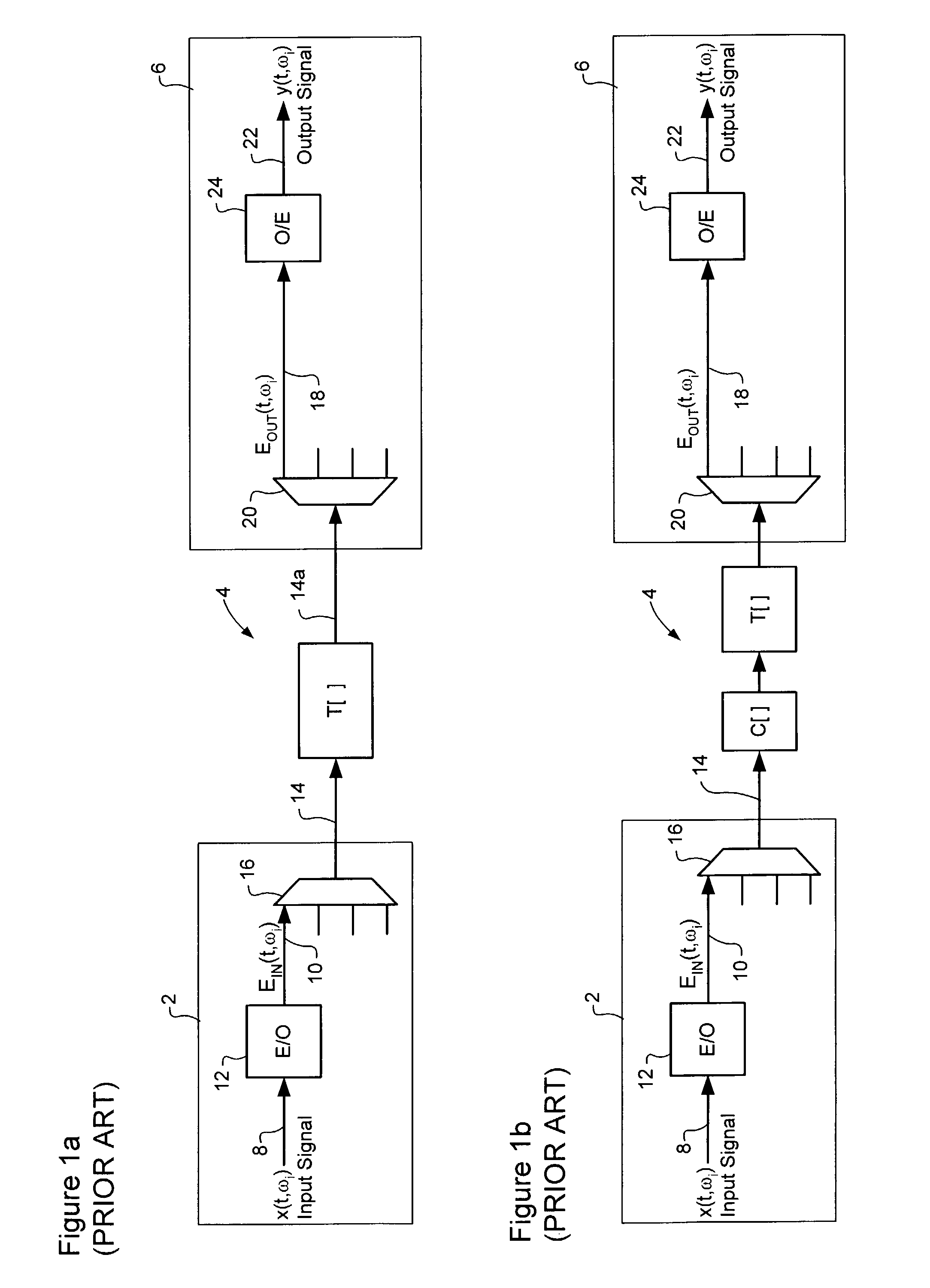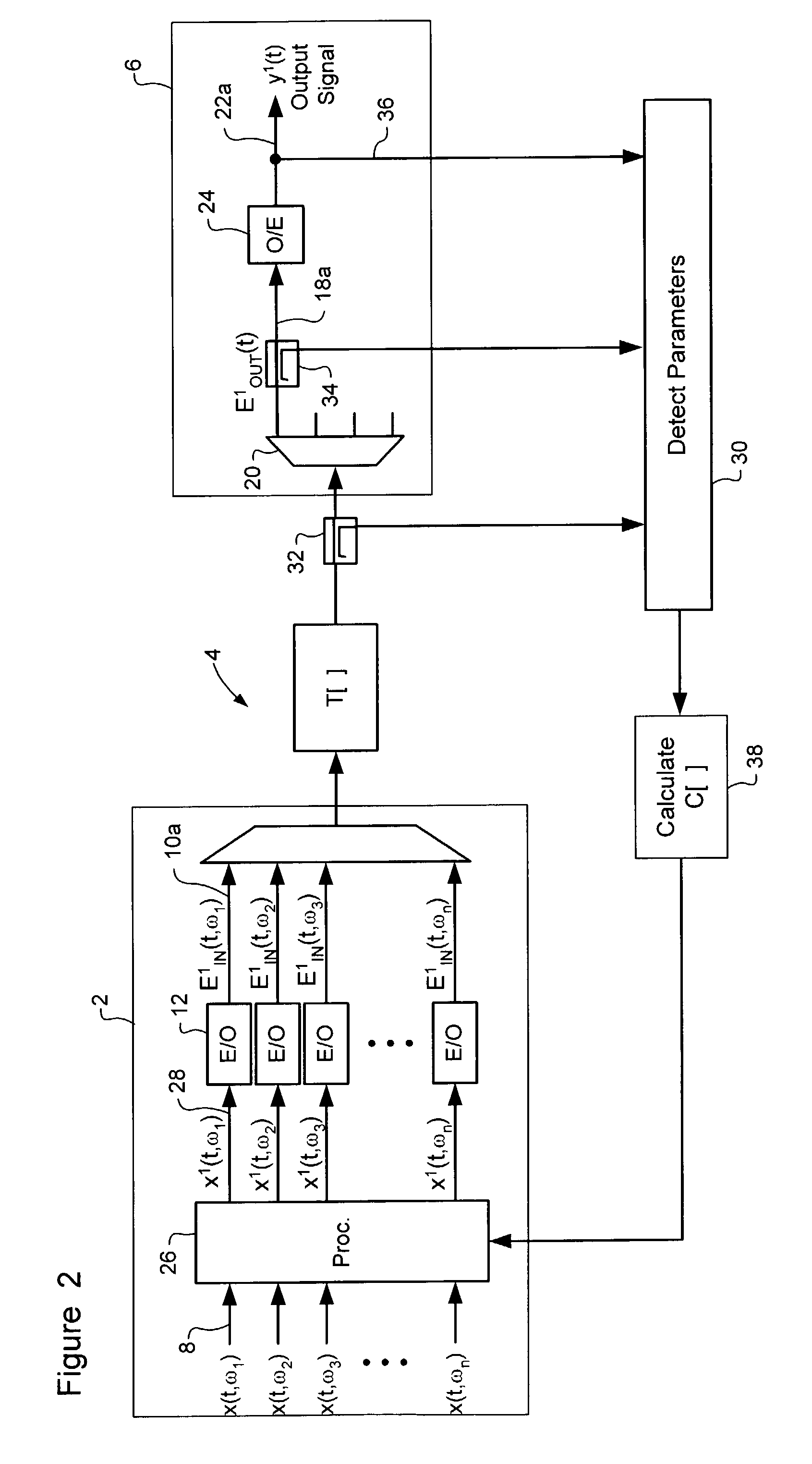Electrical domain compensation of non-linear effects in an optical communications system
a technology of nonlinear effects and optical communications, applied in electromagnetic transmission, electrical apparatus, transmission, etc., can solve the problems of limiting system performance and signal reach, increasing transmission power level, and optical signal degradation
- Summary
- Abstract
- Description
- Claims
- Application Information
AI Technical Summary
Benefits of technology
Problems solved by technology
Method used
Image
Examples
Embodiment Construction
[0031]The present invention provides a method and system for compensation of non-linear and cross channel effects in an optical communications system. For the purposes of the present invention, “non-linear and cross-channel effects” shall be understood to refer to signal distortions due to phase non-linearities, such as Self Phase Modulation (SPM) cross-phase modulation (XPM), Modulation instability (MI) and four-wave mixing. “Cross-channel effects” shall be understood to refer to signal distortions due to optical cross-talk. FIG. 2 is a block diagram schematically illustrating principal elements and operations of a compensation system in accordance with the method of the present invention.
[0032]In accordance with the present invention, signal distortions due to the link complex non-linear operator T[E(t)] are at least partially compensated by deriving a compensation operator C[E(t)] that optimizes the performance of the link 4, and then predistorting the input signal x(t), in the e...
PUM
 Login to View More
Login to View More Abstract
Description
Claims
Application Information
 Login to View More
Login to View More - R&D
- Intellectual Property
- Life Sciences
- Materials
- Tech Scout
- Unparalleled Data Quality
- Higher Quality Content
- 60% Fewer Hallucinations
Browse by: Latest US Patents, China's latest patents, Technical Efficacy Thesaurus, Application Domain, Technology Topic, Popular Technical Reports.
© 2025 PatSnap. All rights reserved.Legal|Privacy policy|Modern Slavery Act Transparency Statement|Sitemap|About US| Contact US: help@patsnap.com



